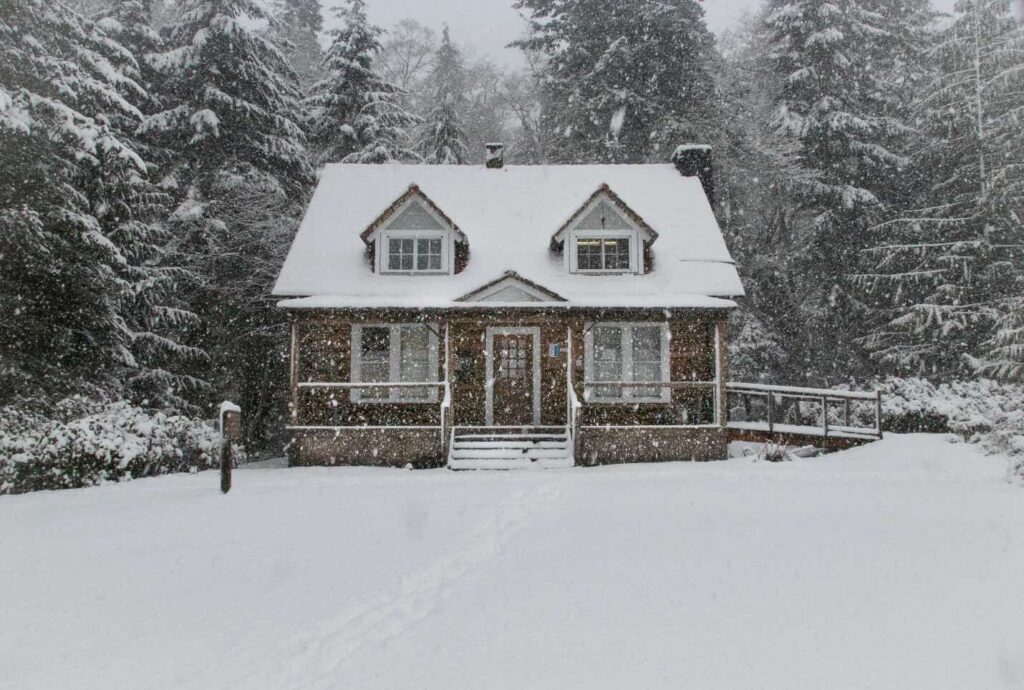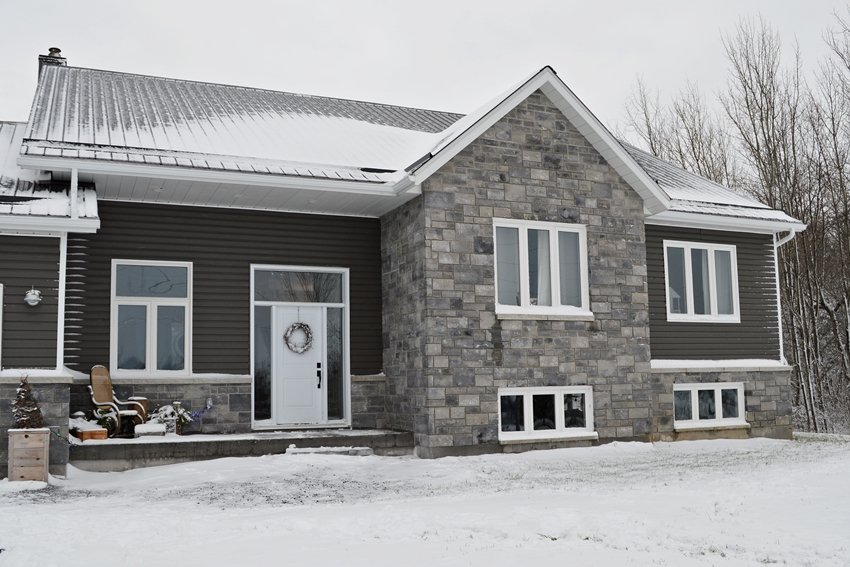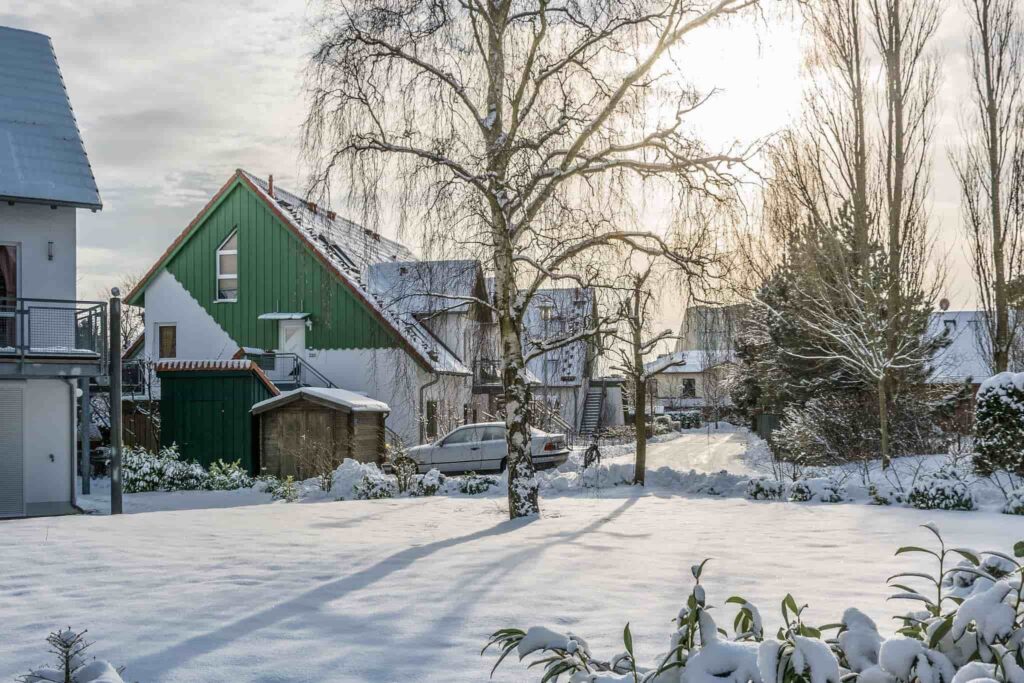Every winter is different, but it’s usually characterized by cold temperatures, falling snow, strong winds, and ice. Strong winds cause trees and branches to topple, damaging your roof and other parts of your house. It can also blow leaves and dirt in your gutter, clogging the downspouts, causing water leakages into your home, cracking foundations, and flooding basements. Heavy snow damages your roof and landscape, and when it melts, it may leak into the basement and cause flooding.
If you have a sump pump, the cold winter weather may cause blockage in the pipe, forcing water back into your house. This may cause leaks, mildew, and mold. Some of the health issues associated with the winter season are frostbite, heart issues, hypothermia, acute and chronic bronchitis, pneumonia, common colds, coughs, and flu. Here are the tips for preparing your home for winter.
Confirm your home’s heating and air conditioning system functionality

source: blueandgreentomorrow.com
Your HVAC system is responsible for regulating heat within your home. To ensure the system’s optimal performance for winter, change the filter and regularly replace it. Turn on the furnace a couple of times when it’s still mild outside to ensure it’s still functional. Consider reprogramming your thermostat, bleeding the radiator valves, servicing the chimneys, and inspecting the ductwork.
Test your carbon dioxide and smoke detectors and clean the air vents. If the heating system requires any repairs or replacements, engage an experienced and reliable HVAC specialist like 888 heating to have those issues addressed.
Clean your gutters

source: howtobuildit.org
Clogged and saggy gutters become more damaged with the weight of ice and snow, causing severe and costly home damage. To prep your gutters for winter, clean debris and leaves out of your gutters, inspect for wear and tear and seal cracks, check joints, inspect for loose or missing fasteners. Realign your gutters to prevent water from standing, and install gutter guards. Adding downspout extensions will send melting ice and snow further away from your home’s base. Check for structural damage and do the necessary repair.
Paint, caulk, and seal exterior wood
All your home’s exterior wood trim should be protected from elements so the wood doesn’t rot. Replacing the trim can be challenging and costly, so keep it caulked and painted to ensure it doesn’t rot in place. Before the trim rots, go round your home to ensure that the caulk doesn’t crack and your paint isn’t chipping or flaking away.
Although your deck is made from rot-resistant or treated wood, it also needs protection. You don’t have to seal or stain your deck each year, but regularly check it to ensure it’s protected.
Insulate pipes

source: thevanderveenhouse.com
Exposed pipes that run along a wall or in an unheated area such as the crawl space or basement are a potential hazard. When the temperatures drop below 32 degrees during winter, the water inside can cause the pipe to freeze and burst, leading to flooding. You can easily protect the pipes with proper insulation.
Get the chimney inspected
When wood burns, deposits of creosote build up inside your chimney. The creosote is highly flammable and cancerous. When a large amount of it collects in your chimney, the smoke from the fireplace can cause it to ignite, and this may lead to a chimney fire. Having your chimney regularly inspected can help avoid any fire risks. You may also install a steel liner to keep your home safe in case of a chimney fire.
Have your roof inspected

source: bhgre.com
Getting your roof inspected is an essential step when preparing your home for winter. Check your roofline to ensure it’s straight and the chimney flashing for leaks. Inspect the attic for water damage because it presents the first signs of a leaky roof. Remove any twigs, leaves, and other debris accumulated on your roof during the fall season. Failure to remove the piles of dirt on the roof leaves them waterlogged, making your roof susceptible to water damage.
Trim hanging branches
Preparing your home for winter also involves preparing the trees around it. Trees with branches hanging near your roof are a threat during the winter season. This is because, in case of deep frost, snow, and ice buildup on the branches, they may fall off due to the extra weight and fall on your roof.
Additionally, strong winds can also cause the branches to snap and land on your roof. Trimming them eliminates this risk throughout the winter season. If the branches already extend over your roof, hire a professional to trim them so you don’t destroy the roof or hurt yourself.
Insulate your windows

source: servicemastersouthshore.com
Winter drafts can increase your energy bill, but reducing the drafts can significantly reduce your energy costs. To insulate your windows, you can use V-seal weather stripping, rope caulk, shrink film, nail polish, and draft snake.
Endnote
The winter season can be harmful to your health and home if proper care isn’t taken. Consider using the above tips to prepare your home for winter.



